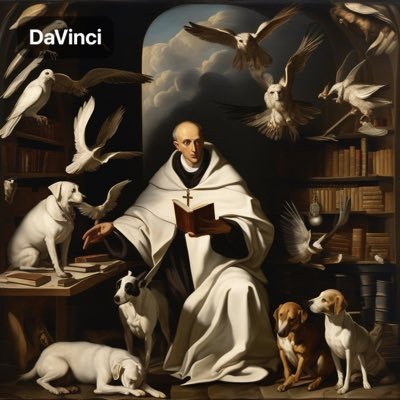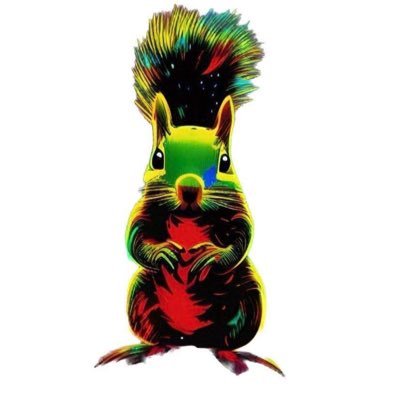
Thomistic Animals
@ThomistAnimals
Followers
582
Following
9K
Media
809
Statuses
4K
Animal Cognition Writer & Philosopher PhD documenting my adventures, musings, and animal insights here. What’s the estimative got to do with it? Everything dear
Joined January 2024
“If a #lion could #speak, we could not understand him.” -Ludwig #Wittgenstein
#talkinganimals
#animals
3
0
21
I’m just gonna post another cute monkey video right here: You’re welcome. Happy long weekend. Now, go grab a nice drink.
2
0
5
“Sickness in birds may be diagnosed from their plumage, which is ruffled when they are sickly instead of lying smooth as when they are well.” —Aristotle, History of Animals VIII.18
#bird peeps. Got an ill collared dove. It’s gasping. Foamy Pooh. Really weak. SPCA can’t take in any birds as they are overwhelmed. Any ideas?
0
0
0
“lobsters slough [molt] sometimes in the spring…” —Aristotle, History of Animals VIII
I'm moulting, I'm moulting! A crayfish (closely related to lobsters) moulting it's shell. Many invertebrates moult their shells as their bodies grow. The old shell is too small, so they have to squeeze out of it before the new shell hardens. (📽️National Lobster Hatchery)
0
0
0
Female moose defending her baby calf from a pack of wolves: Photo credit: Getty via BBC Wildlife
0
0
1
“those fishes suffer most in severe winters that have a stone in their head” —Aristotle, History of Animals VIII.19
What is an otolith? It’s an ear stone that scientists use to determine the age of a fish by counting its rings, like a tree. How old is this Alaskan pollock? #TriviaTuesday #otolith #MarineLife #Fish #Alaska #AK
https://t.co/vu6piDnoJb
0
0
2
Freaky, but kinda cool:
In the twilight zone, at depths of 600 to 800 metres, remote operated vehicles took footage of a fish with a transparent head, Macropinna microstoma, the barreleye fish whose transparent head allows its eyes to collect incident light Source @MBARI_News
0
0
0
To be released tomorrow!! Read about animal cognition of numbers in chapter 23 or just DM me for a copy! https://t.co/CAjLtDEaMJ
amazon.com
Non-human animals are a topic of intense philosophical interest in the modern day. It is often supposed that this is a recent development, but in fact pre-modern philosophers were intensely interes...
0
0
1
One in about two million lobsters are born blue due to a rare genetic mutation
349
170
3K
2. Handcrafted materials—some over 650 years old— found in ancient Bearded Vulture nests. (A) Part of an esparto grass slingshot. (B) A detail of a crossbow bolt and its wooden lance. (C) Agobía, footwear made of grass and twigs ~674 years old. Agobías typically lasted for a
4
9
47
#Birds 1. Researchers have discovered over 200 ancient human artifacts in historical Bearded Vulture nests in southern Spain. Once abundant, intensive persecution has left only a few hundred of this important species in the region, but they've left a fascinating record. 👉 🧵
5
57
224
Aristotle said the river-crocodile doesn’t eat during the depths of winter (History of Animals VIII). What he said might actually be true: https://t.co/as3fRgRM7L
jhbcityparksandzoo.com
In preparations for winter, we fuel our gas heaters and adjust the home temperatures. Insects gather their food as they prepare to hibernate. So are reptiles an...
0
0
1
To answer whether animals cognize numbers, one must first understand what number is. What is number? Numbers are in the genus of quantity. Quantity is divided into discrete (numbers) & continuous (size). There’s not doubt that animals can cognize greater or lesser quantities of
An earlier draft version of my findings can be found here (note: I wasn’t allowed to upload the final print version due to the publishing contract): https://t.co/9HuBszyQPo
0
0
1
If anyone wants a copy of the finalized published version, DM me!
An earlier draft version of my findings can be found here (note: I wasn’t allowed to upload the final print version due to the publishing contract): https://t.co/9HuBszyQPo
0
0
2
An earlier draft version of my findings can be found here (note: I wasn’t allowed to upload the final print version due to the publishing contract): https://t.co/9HuBszyQPo
academia.edu
Please note: this is only a draft of the paper (pre-peer reviewed edits), which I am allowed to upload here. For the final version of the paper, please go here: https://brill.com/display/book/97890...
To that end, I first present the thought of Thomas Aquinas on animal cognition of numbers as inherited from the works of Aristotle and Albert the Great. Second, I present the famous case of Clever Hans–––the horse who looked like he could do math––as a cautionary tale for
0
0
1
To that end, I first present the thought of Thomas Aquinas on animal cognition of numbers as inherited from the works of Aristotle and Albert the Great. Second, I present the famous case of Clever Hans–––the horse who looked like he could do math––as a cautionary tale for
Unwittingly contemporary comparative psychology has adopted large parts of this cognitive terminology from modern philosophy. While the scholastic terminology awaits its return into contemporary psychological discourse and popular culture, its treasures lie hidden in the works of
0
1
2
Unwittingly contemporary comparative psychology has adopted large parts of this cognitive terminology from modern philosophy. While the scholastic terminology awaits its return into contemporary psychological discourse and popular culture, its treasures lie hidden in the works of
The abstract is thus: “From National Geographic to The New York Times, numerous media reports boldly proclaim animals can count. But does this “counting” indicate an understanding of abstract numbers? Since the advent of René Descartes conceptual confusion reigned in the West,
0
0
2
The abstract is thus: “From National Geographic to The New York Times, numerous media reports boldly proclaim animals can count. But does this “counting” indicate an understanding of abstract numbers? Since the advent of René Descartes conceptual confusion reigned in the West,
I investigate this in my new book chapter in a volume edited by Peter Adamson & Miira Tuominen: “Can Animals Count? How Might Aquinas Explain Recent Cases of Animals Cognizing Quantities or Numbers?”
0
0
1








